ASTEROID CITY (2023)
Following a writer and his play about a grieving father who travels with his family to a small desert town to compete in a junior stargazing event...
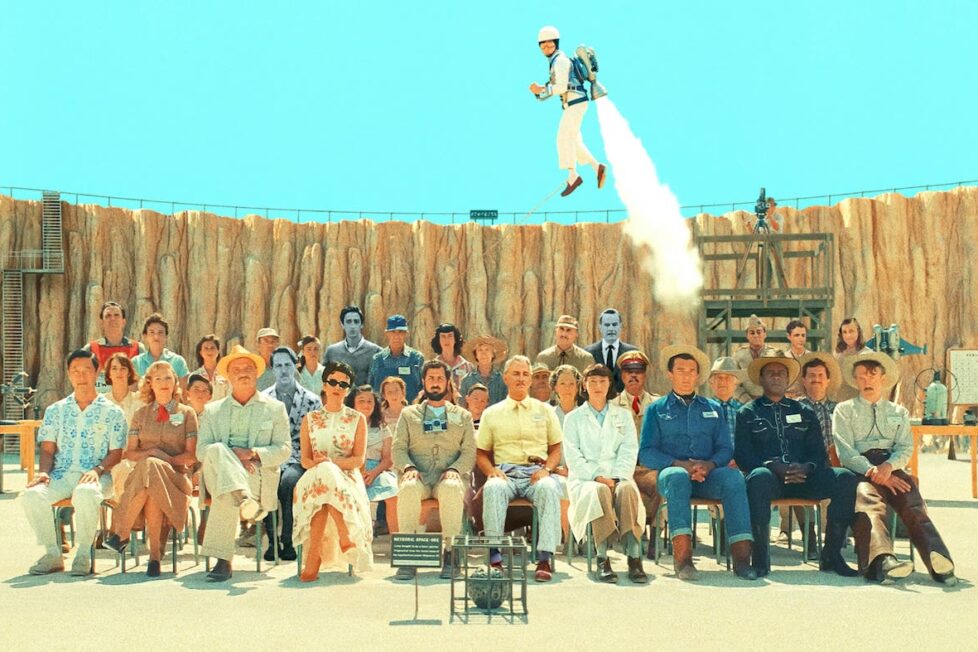
Following a writer and his play about a grieving father who travels with his family to a small desert town to compete in a junior stargazing event...


In a cinematic landscape containing such towering mountains as Quentin Tarantino (Reservoir Dogs), Paul Thomas Anderson (Licorice Pizza), and Guillermo del Toro (Pinocchio), Wes Anderson is indisputably one of the most distinctive. Throughout his career, the writer-director has been uniformly meticulous and consistent, his increasingly elaborate framing devices and whimsical storytelling have become instantly recognisable. While his eccentricities have long been his most familiar attribute, emotional complexities are also integral to his mainstream appeal. Anderson’s eleventh feature-length film is his first foray into science-fiction and, co-written with frequent collaborator Roman Coppola (Moonrise Kingdom), Asteroid City proves to be a mesmerising if indulgent experience.
Set in 1955, the titular Asteroid City is where the finalists of the Junior Stargazers Convention convene for their annual awards ceremony. The recently widowed Augie Steenbeck (Jason Schwartzman) and his family are attending the event where his extraordinarily gifted son, Woodrow (Jake Ryan), is expected to win a prize. Staying in the adjacent hotel to the Steenbeck is Hollywood actress Midge Campbell (Scarlett Johansson), accompanied by her daughter Dinah (Grace Edwards), who’s also receiving an accolade at the convention. While Augie begins a tentative flirtation with the actress, Woodrow befriends the four other gifted teens who’ve travelled to the convention. But during General Grif Gibson’s (Jeffery Wright) and astronomer Dr Hickenlooper’s (Tilda Swinton) ceremony, an unexpected visitor makes a surprise appearance… and, after an extraterrestrial apparently steals Asteroid Cit’s famous meteorite, the government quarantines the 87 residents. What to make of the close encounter is the riddle the travelling families will struggle to answer themselves.
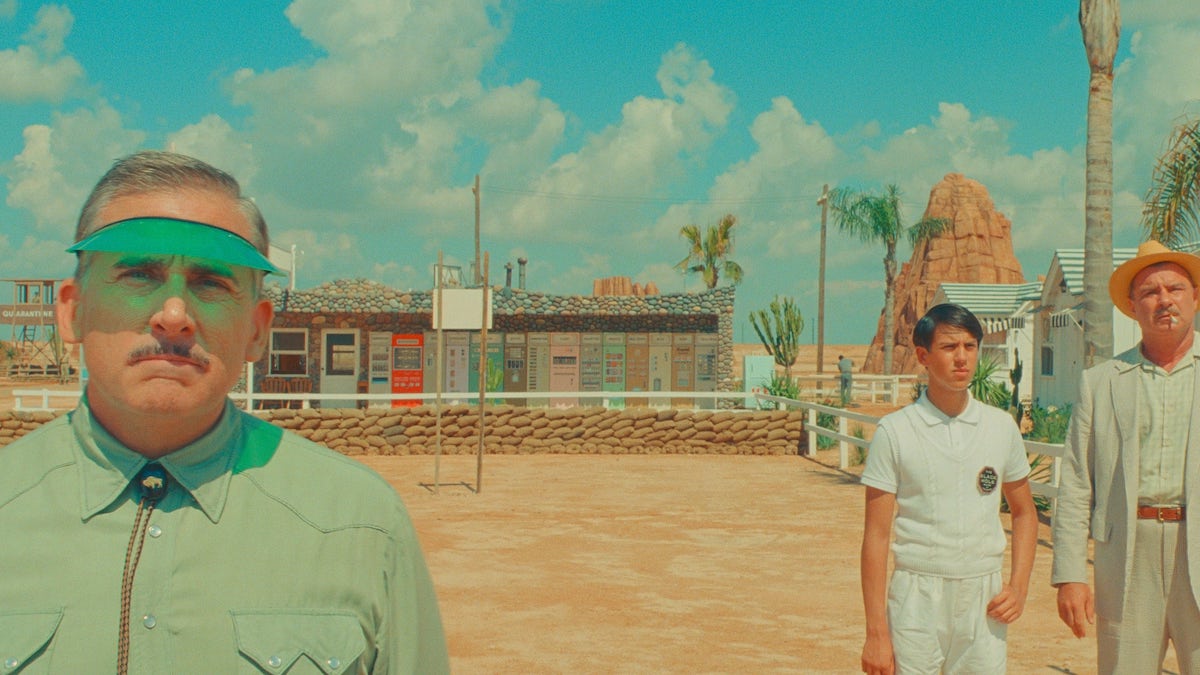
In typical Anderson fashion, Asteroid City boasts an impressive ensemble that only he could assemble. Since their initial collaboration in Rushmore (1998), Jason Schwartzman has become the quintessential Anderson protagonist. As recently-widowed war photographer Augie Steenbeck, Schwartzman surpasses himself and provides a remarkably introspective and multifaceted performance. Seemingly channelling both Roman Coppola (The Darjeeling Limited) and Stanley Kubrick (Clockwork Orange), his blend of deadpan melancholy captures the soul-searching essence that has matured Anderson’s works over the years.
Similarly, Scarlett Johansson (Marriage Story) is wondrous, delivering a deliberate and contemplative turn as fictional actress Midge. As a highly nuanced amalgam of Marilyn Monroe, Elizabeth Taylor, and Kim Novak, Johansson slips into this role effortlessly thanks to her natural beauty and self-deprecating humour. Midge endlessly rehearses trauma by covering her eye in grease paint to simulate bruises and poses for a fake suicide attempt in her bathtub. Johansson has great chemistry with Schwartzman, and both bring pathos to characters that are depicted in a detached way.
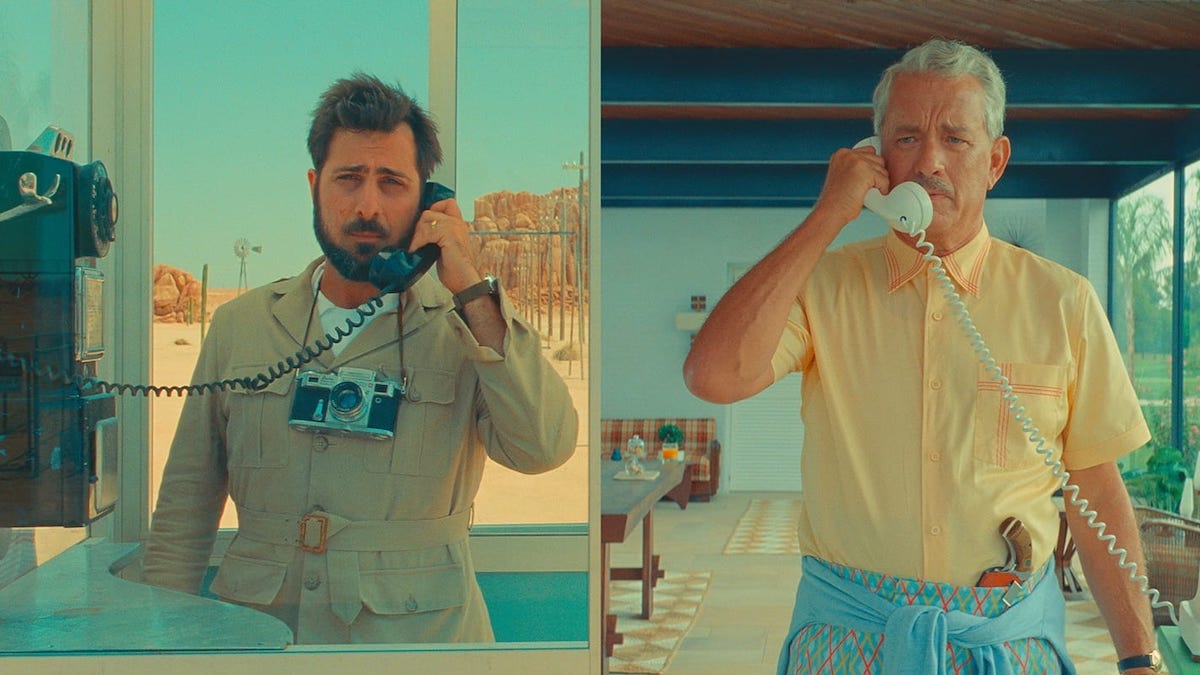
While the story centres firmly around the blossoming romance between Augie and Midge, there’s a kaleidoscope of quirky characters who are just as colourful as their surroundings. Tilda Swinton (Suspiria) plays enthusiastic astronomer Dr Hickenlooper, while Jeffrey Wright (The Batman) plays the buttoned-down general with literary aspirations, General Grif Gibson. Meanwhile, the constellation of performers that make up Asteroid City’s ensemble expands Wes Anderson’s repertory—with newcomers such as Maya Hawke (Stranger Things), Matt Dillon (Wild Things), Bryan Cranston (Drive), and Hong Chau (The Menu).
One particular highlight is Steve Carell (Beautiful Boy) as a hotel manager who welcomes his guests by giving them a guided tour around the amenities. However, the standout is Tom Hanks (Elvis) as Augie’s cantankerous father-in-law, Stanley. Providing a welcome gravitas that adorns the filmmaker’s best work including Rushmore and The Royal Tenenbaums (2001), Carell delivers an emotional performance as he learns to navigate his grandchildren’s grief as well as his own.
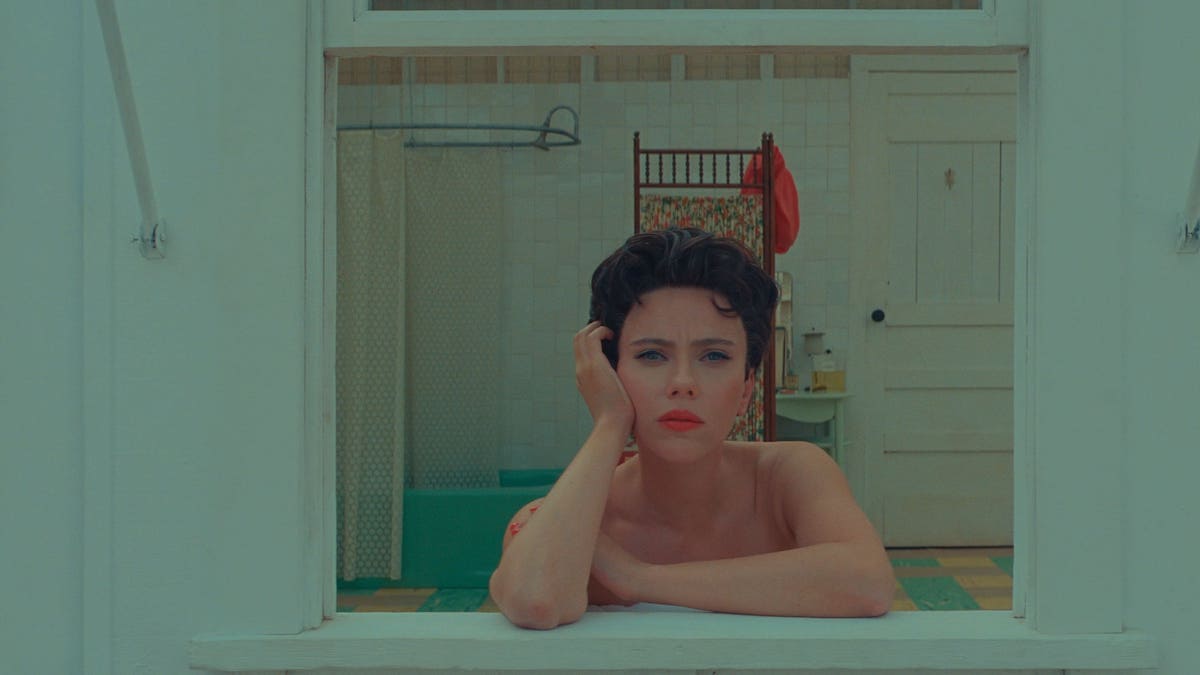
Anderson’s flamboyant artifices get more elaborate with every new addition to his oeuvre. The Grand Budapest Hotel (2014) chased an intricate narrative structure by employing an elegant framing device that nestled stories within stories, while The French Dispatch (2021) was structured to evoke the feeling of flicking through the pages of The New Yorker. Asteroid City operates on a number of levels and presents the events of the titular town as a TV production of the making of a play. We immediately learn that what we’re watching is a TV broadcast hosted by a besuited man (Bryan Cranston) with an air of Rod Sterling (The Twilight Zone) about him. Beautifully photographed by Robert Yeoman (Dogma) in monochrome and the Academy ratio of 1:37:1, we’re promised “a new play mounted for the American stage.” These vignettes function as a backstage documentary and introduce the audience to the celebrated playwright Conrad Earp (Edward Norton) preparing a Broadway play also titled “Asteroid City”.
The second thread is the cinematic rendition of the fictional play itself. During these scenes, audiences are transported to the vast desert landscape and introduced to the war photographer Augie. Here the titular town is a vibrant Technicolor slice of Americana captured in Cinemascope 2:39:1. Throughout the 105-minute runtime, Anderson incorporates title cards and an intermission break as he fearlessly navigates back and forth between multiple narrative threads. A cynic might suggest this conceit is convoluted and necessarily complicated. However, no filmmaker is more adept at seamlessly executing a Matryoshka narrative. Anderson has been previously guilty of grandiloquence but Asteroid City is undoubtedly one of his fully formed artistic statements.
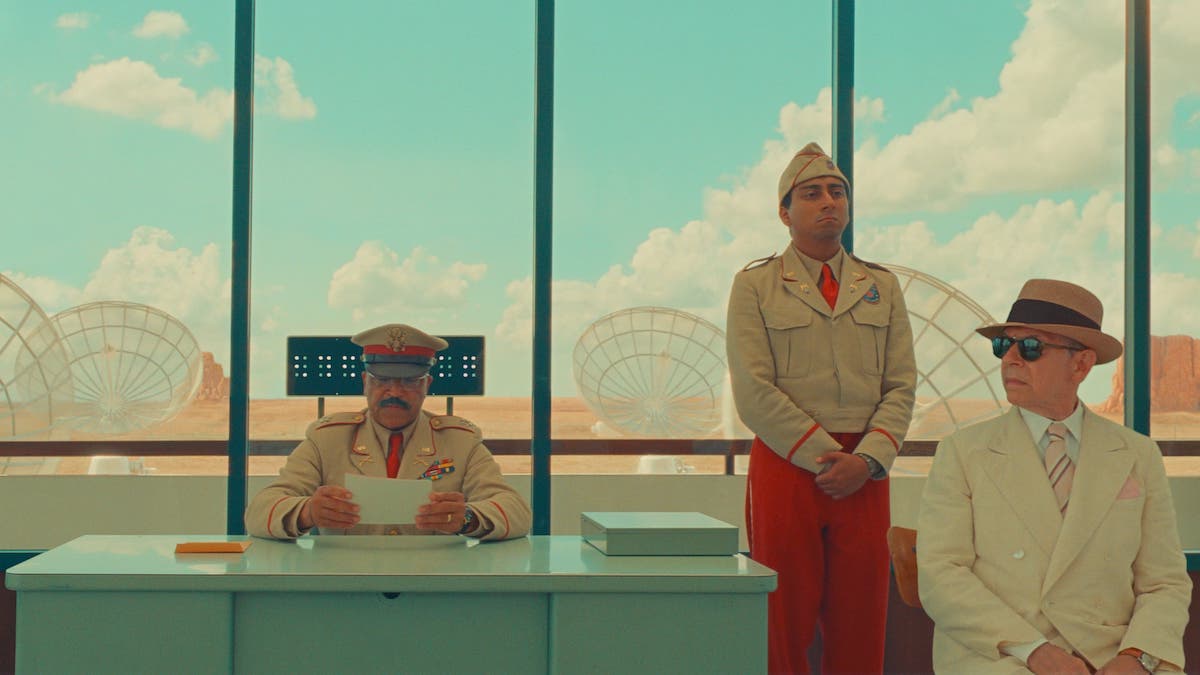
This construct and intricate narrative structure consistently positions Asteroid City on the edge of succumbing to style over substance. However, the heartbeat inside Anderson’s and Roman Coppola’s screenplay keeps the narrative emotionally rooted. Beneath its playful whimsy and jaunty mischievousness are subtle underlining notes of mourning, loneliness, and a desperate desire for human connection. Although every character yearns for their own sense of belonging and a better understanding of the universe, the central emotional focus is found between Augie and Midge. Augie buries his mourning beneath layers of deadpan pronouncements, whereas Midge hides her relationship trauma with a sardonic stiltedness. Through their shared interactions, they’re both able to connect with someone equally disconnected from their emotions.
One of the most wistfully beautiful sequences is during a conversation between the pair through the windows of their neighbouring motel rooms. As they discuss their lives, their losses, and their art, Midge refers to them both as “two catastrophically wounded people who don’t express the depths of their pain because we don’t want to.” After a moment of consideration, Augie replies “Let’s change the subject.” The scene becomes emotionally resonant when it echoes outside a New York soundstage during the final act. The moment Augie reveals his repressed inner hurt is equally as poignant as the moment Ben Stiller delivered the line “It’s been a rough year, dad” in Tenenbaums. Beneath Anderson’s intricately designed tableaux is a firm understanding of human vulnerability and emotion. Although it’s displayed through moments of detached understatement, the filmmaker demonstrates a deep understanding of human frailty.
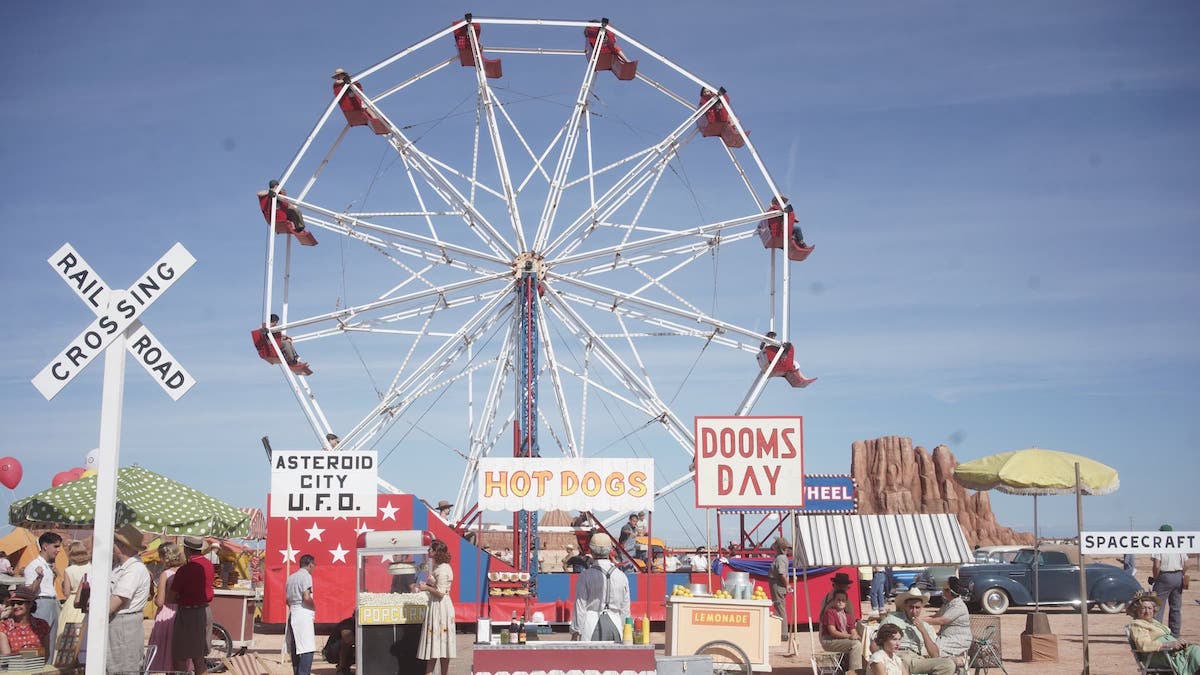
Although the undertow of melancholic sentimentality sounds dauntingly bleak, it’s embedded into a lighthearted story that could be accused of being downright eccentric. Anderson takes full advantage of the natural absurdity by employing his whimsical sensibilities and deadpan humour. Most of the comedy derives from the characters contending with life-altering questions and their subsequent confinement: a spontaneous musical number when a young religious school teacher (Hawke) fails to keep her class calm, or Stanley finding solace in the otherworldly rituals of his strange granddaughters as they bury their mother’s ashes.
The black dialogue is ambiguous and delivered with serious faces in perfectly fitting outfits, but alongside the sharp witticisms are some delightfully contrived set pieces. Anderson incorporates SFX and stop-motion elements to create some fascinating characters and often hilarious moments—most notably during a nighttime event where the tourists are encouraged to put a cardboard box over their heads to observe an astral phenomenon. And after a flying saucer lands in the town’s gigantic meteorite crate, the group’s visited by a spindly alien with enormous eyes and monochromatic skin. The attendees watch as the creature nervously moves like a raccoon caught in a spotlight as he claims the town’s famous rock.
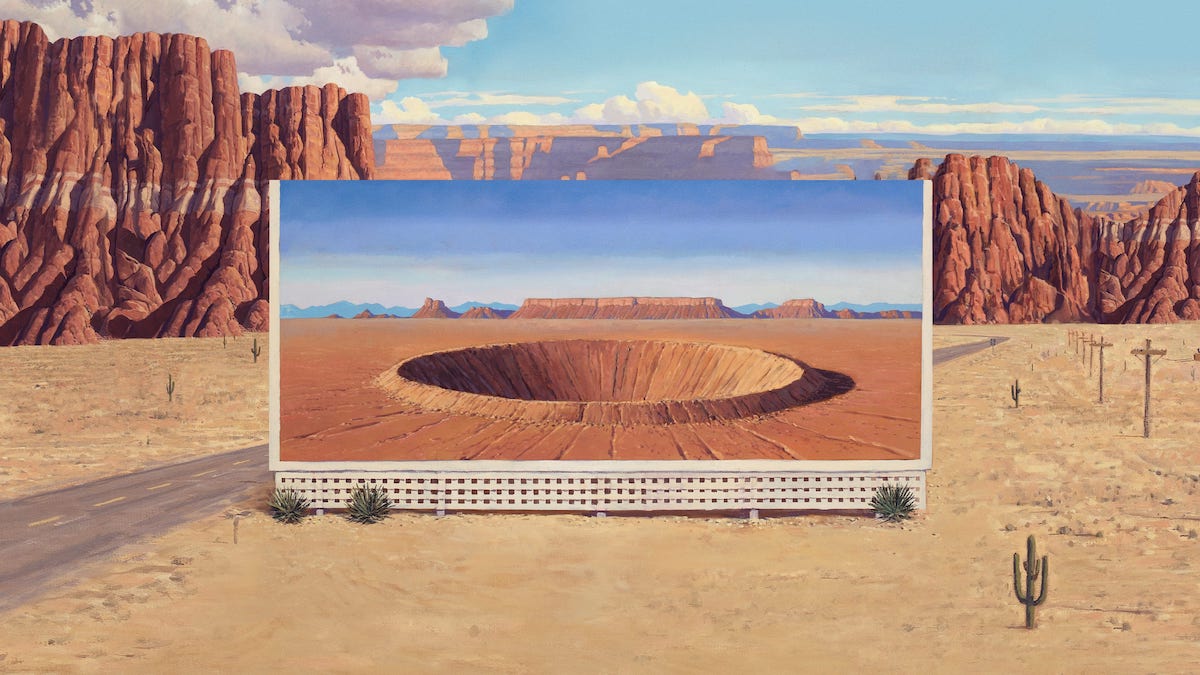
Although audiences have become accustomed to Anderson’s aesthetic, that doesn’t mean it’s anything less impressive on a technical level. Asteroid City is amazingly stylised and, as with his previous creative endeavours, many of his techniques are on show. Filmed beneath the unforgiving sun in the Spanish town of Chinchón, the natural lighting enhances the striking colour palette. The pastel blues, sulphur yellows, and turquoise greens generate such vibrancy and contrast nicely against the otherwise arid desert landscape.
Robert Yeoman’s symmetrical compositions, skewered angles, and rapid tracking sequences are as meticulously crafted and detailed as ever. There are several moments where he replaces his stationary camerawork and executes a full 360-degree rotation to establish the setting. If the plethora of obnoxious computer-generated parodies circulating social media has proven anything it’s that Anderson’s distinct filmmaking sensibilities are more rigorous than the most complex A.I. The filmmaker demonstrates that he’s at the height of his technical powers and Asteroid City is proof that one can’t fake truly inspired artificiality.
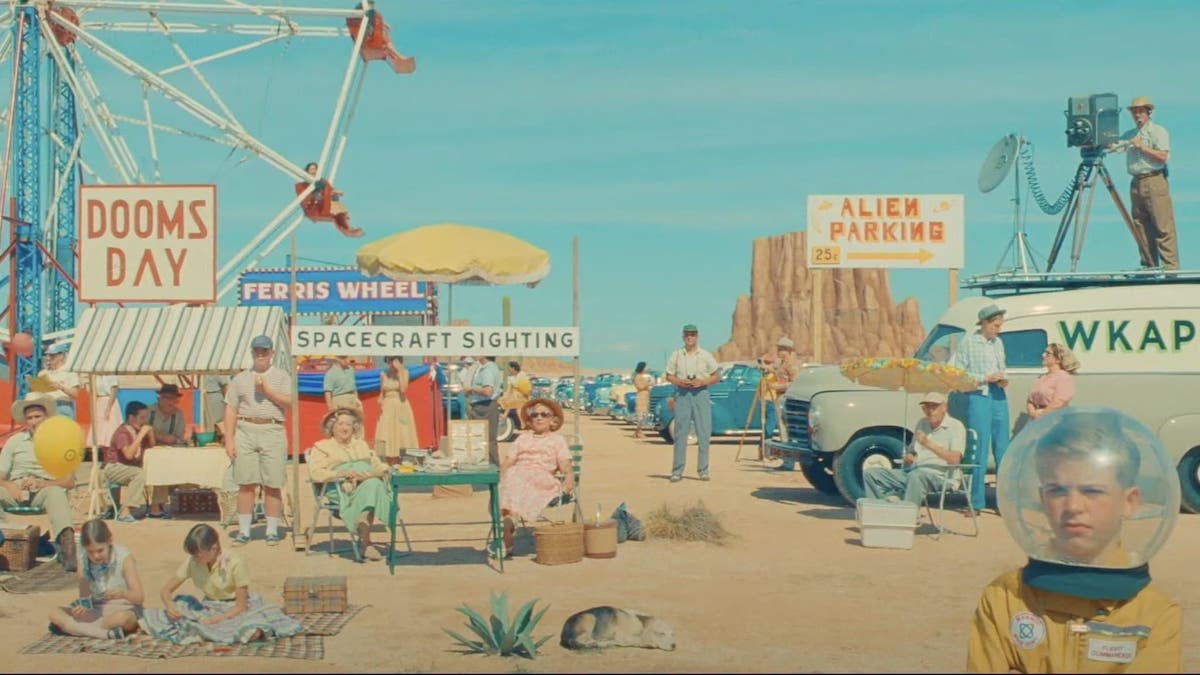
Asteroid City carries a playful vibrance and tangibility that will be familiar to anyone who’s seen The Grand Budapest Hotel. A government train carrying avocados, pecans, and nuclear warheads rattles across a dusty plain. The hotel contains a row of identical vending machines that dispense everything from cocktails to cigarettes. A roadrunner occasionally wanders into the frame, emphasising the gloriously cartoonish world that is vividly brought to life. Although Anderson deserves praise for his extraordinarily meticulous world-building, credit should be equally awarded to Adam Stockhausen’s (The French Dispatch) immaculate production design. The luncheonette, the garage, and the motel were erected as real buildings. Whereas matte paintings of mesas and plastic cacti were also constructed to emphasise the desert landscape. Inspired by Billy Wilder’s Ace in the Hole (1951) and John Sturges’ Bad Day at Black Rock (1955), the roadside town is a nostalgic paean to the analogue and a treasure trove of charming retro details. Everything has been so thoroughly stylised that it creates the visage that we’re viewing the world through a 1950s travel brochure.
Wes Anderson reaches new dimensions of decorative ingenuity with his first expedition into sci-fi. Asteroid City is one of his most thought-provoking and emotionally honest works to date. It succeeds as a surprisingly profound exploration of the human condition and our constant desire to understand the incomprehensible. It’s like Charlie Kaufman’s Synecdoche, New York (2008) existential disorientation, but seen through the lens of Steven Spielberg’s Close Encounters of the Third Kind (1977).
The narrative device may be divisive, but it’s seamlessly married with linguistic humour, striking cinematography, and charming performances. Anderson’s cinematic artistry and comedic sensibilities have never been sharper and Asteroid City is utterly enchanting from beginning to end.
USA | 2023 | 105 MINUTES | 1:37:1 • 2:39:1 | COLOUR | ENGLISH

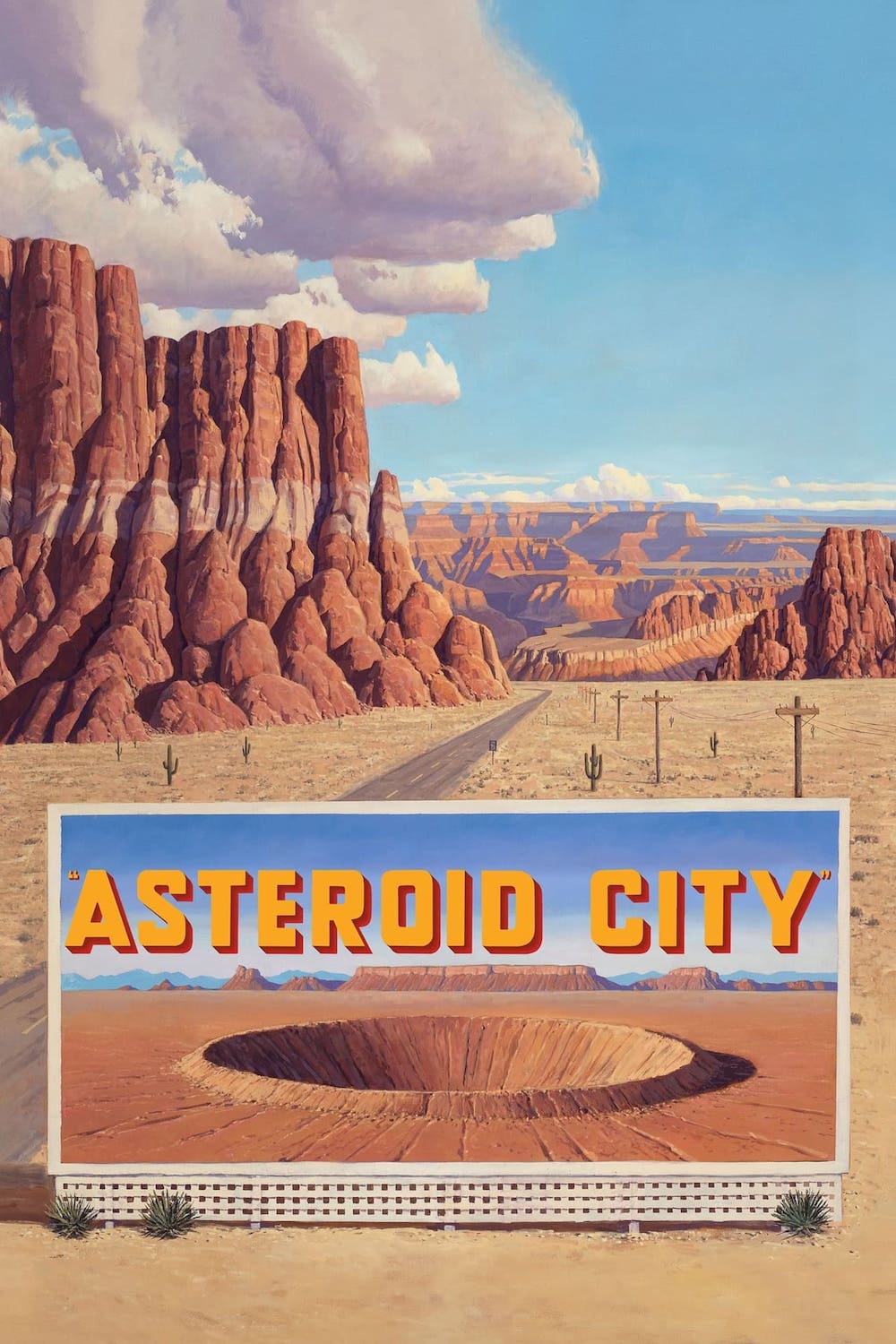
director: Wes Anderson.
writers: Wes Anderson & Roman Copolla.
starring: Jason Schwartzman, Scarlett Johansson, Tom Hanks, Jeffrey Wright, Tilda Swinton, Bryan Cranston, Edward Norton, Adrien Brody, Grace Edwards, Jake Ryan, Maya Hawke, Liev Schreiber, Ethan Josh Lee & Jeff Goldblum.
